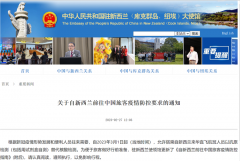加拿大华人论坛 加拿大百科双语解读“忽悠人”15招
在加拿大
面对骗子我们每个人都会说不!但是事实是有时骗子在你身边你根本识别不出来,有时聊得开心了反而被骗了还会请他吃个饭……这里就为你奉上15招防骗指南让那些忽悠咱们的全都一边去! 1. Physical expression will be limited and stiff, with few arm andhand movements. Hand, arm and leg movements are toward their own bodyas the liar tries to take up less space。 1. 肢体语言很拘束,僵硬,手臂和手不怎么动。手、手臂和腿的移动都靠向自己的身体,因为撒谎者设法占据更少的空间。 2. A person who is lying to you will avoid making eye contact。 2. 骗你的人通常会避免和你眼神接触。 3. Hands touching their face, throat &mouth. Touching orscratching the nose or behind their ear. Not likely to touch hischest/heart with an open hand。 3. 手触碰自己的脸、喉咙和嘴巴。碰或抓鼻子或耳后。他们不太可能去碰自己的胸膛/心脏。 4. A statement with a contractionis more likely to be truthful:"I didn't do it" instead of "I did not do it"。 4. 使用缩写式来陈述似乎更值得信任:"我没做过"而不是"我没有这么做过"。 5. Expressions are limited to mouth movements when someone isfaking emotions (like happy, surprised, sad, awe, ) instead of thewhole face. For example; when someone smiles naturally their whole faceis involved: jaw/cheek movement, eyes and forehead push down, etc。 5. 当一个人撒谎时,他的面部表情会局限在嘴巴处(像高兴、欣喜、悲伤和敬畏),而不是整张脸。例如,当一个人自然微笑时,整张脸都会有反应:下巴/脸颊会动,眼睛和前额会向下等。 6. The guilty person may speak more than natural, addingunnecessary details to convince you… they are not comfortable withsilence or pauses in the conversation。 6. 罪犯可能会比平时说的更多,添加更多不必要的细节来说服你……他们会因为对话中的沉默或停顿而不安。 7. Timing is off between emotions gestures/expressions and words.Example: Someone says, “I love it!” when receiving a gift and thensmiles after making that statement, rather then at the same time thestatement is made。 7. 手势/表情和说话的时机不对。例如:某人在收到礼物后说:“我喜欢这个!”,之后再露出笑容,而不是在说话的同时露出微笑。
评论
三千日夜吟愁赋,一亿白发尽满头。梦入枫林遍芳丛,觉来惆怅恨无数。 [[FONT=宋体]加拿大,请在不远的地方等我http://www.canadameet.com/bbs/showthread.php?t=263009][/FONT] [[FONT=宋体]起程-[FONT=宋体]献给[/FONT]91[FONT=宋体]旧政和[/FONT][FONT=宋体]新政的同路人[/FONT]][/FONT] [[FONT=宋体]一个等待移民者的内心独白http://www.canadameet.com/bbs/showthread.php?t=255315[FONT=宋体]][/FONT][/FONT] 超赞 赏 故乡的云Moderator 0$(VIP 0) 56,3882010-03-18#2 回复: 双语解读“忽悠人”15招8. Gestures/expressions don't match the verbalstatement, such as frowning when saying “I love you。” 8. 手势/表情和嘴上说的不匹配,例如说:“我爱你”的时候皱着眉头。 9. Words may be garbled and spoken softly, and syntaxandgrammar may be off. In other-words, his sentences will likely bemuddled rather than emphasized。 9. 撒谎者可能用词混淆,声音放轻,句子的结构和语法也会很混乱。换句话说,他的句子乱七八糟,也没有什么要强调的重点。 10. A guilty person gets defensive. An innocent person will often go on the offensive。 10. 一个罪犯会选择自卫,而一个无辜的人通常会选择反击。 11. A liar is uncomfortable facing his questioner/accuser and may turn his head or body away。 11. 撒谎者面对发问者/原告会不安,他可能会将头或身体转向一边。 12. A liar will use your words to make answer a question. Whenasked, “Did you eat the last cookie?” The liar answers, “No, I did noteat the last cookie。” 12. 撒谎者会用你的话来回答问题。当被问到:“你吃了最后那块曲奇了吗?”撒谎者会说:“没有,我没有吃最后那块曲奇。” 13. A liar may leave out pronouns and speak in a monotonoustone.When a truthful statement is made the pronoun is emphasized as much ormore than the rest of the words in a statement。 13. 撒谎者会省去代名词,并且以一个音调说话。当说实话时,人们会使用不少代名词,并且这些词会发重音。 14. Liars sometimes avoid "lying" by not making direct statements. They implyanswers instead of denying something directly。 14. 撒谎者有时候利用不直接回答来避免"撒谎"。他们不直接否认什么,而是将答案暗示出来。 15. A liar might unconsciously place objects (book, coffee cup, etc。) between themselves and you。 15. 撒谎者可能会下意识的放一样东西(书、咖啡杯等)在他们和你之间。
·生活百科 总机空中SP AUSNET
·生活百科 发电机与电池

